Charles Wiseman Dayley
14 June 1867 – 4 June 1943
Grantsville,
Utah was first known as Twenty Wells because of the many sweetwater
artesian springs in the area. It was first settled in 1848 as a
seasonal livestock grazing site for stock owners in Salt Lake City.
The first permanent settlers arrived in 1850 to establish one of the
more than 350 Mormon colonies throughout the Utah Territory. By then,
the fortified town was known as Willow Creek. Three years later, with
almost 30 families living in the settlement, it was renamed
Grantsville in honor of George D. Grant, the leader of a detachment
of the Nauvoo Legion sent to control hostile Native Americans in the
Tooele Valley.
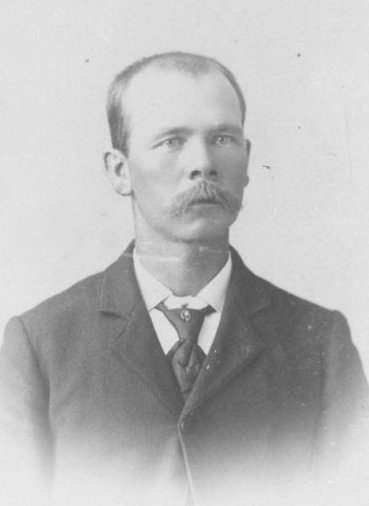
It was during that period that the James Dayley and John William Cooley families, who both arrived in the Territory in October 1852, were sent to settle in Grantsville. The two families established their homes a couple of miles apart. At the time of their arrival, Enoch Rhodes Dayley, the son of James Dayley and Isabelle McBride, was 15 years old. Gennette Cooley, the daughter of John William Cooley and Hannah Gould, was also 15.
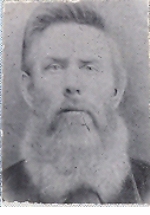
Enoch Rhodes Dayley
Enoch
and Gennette grew up together and with time fell in love and were
married on December 29, 1856. They lived in Grantsville until after
the birth of their first child, Enoch Rhodes, Jr., on February 27,
1858. Later that year, Enoch was called by the church leaders to help
in the settlement of Richmond, Cache County, Utah. They moved there
where they remained until the spring of 1867. While living there,
three of their children were born; George Owen (14 Feb 1860), James
Keller (10 Jun 1862), and, John William (28 May 1865). In 1867 they
moved back to Grantsville.

Gennette Cooley
By the end of the 1860s, Grantsville had become a largely self-sufficient oasis of orchards and shade trees at the edge of the Territory's western deserts. Once back in Grantsville, four more children were born to Enoch and Gennette; Charles Wiseman Dayley was born in Grantsville, Tooele County, Utah on July 14, 1867. This is his story. He was followed by Gennette Isabelle who went by Nettie (18 Oct 1871), Porteous Donald (10 Jun 1873), and Mary Hannah (13 Oct 1875). Mary Hannah died a few months later on February 9, 1876.
When Charles was a small boy about eight years old, he was herding cows out on the prairie one day and his horse fell. With his horse on him, it was impossible for him to get up. He stayed until he was found late at night. His right arm was broken at the elbow and as a result, he always had a stiff and crooked arm resulting in somewhat of a handicap for the rest of his life. Charles was baptized on July 7, 1878.
In
about 1879 at about twelve years old, he moved with his parents and
brothers and sisters to Basin in Cassia County, Idaho, where they
made their home. Basin is located about seven miles east of Oakley.
He received his schooling in Basin and later attended the Missionary
School in Oakley for awhile. He did lots of riding when he was young
and one day he was after some cattle and when he stepped down from
his horse, a rattlesnake struck at him. It was lucky that he was
wearing fur chaps for the snake caught its fangs in the fur. 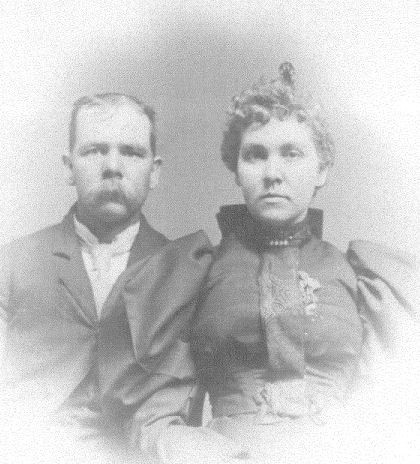
Charles and his sister, Nettie
About the age of eighteen, he, along with some other men drove a herd of horses back to Nebraska for his Uncle, Jim Dayley. He remained there for some time. The wolves were numerous there and very treacherous. He was at a neighbors' place one night (neighbors were miles apart in those days) and as he was walking home he could hear a wolf here and there. He knew he was being surrounded by them. When he got home, Uncle Jim was getting a horse ready to go get him. His uncle asked him why he was running and he said "I wanted to hurry and get home." Then Uncle Jim said, I'd be in a hurry to get home, too, if I were surrounded by wolves like you were."
There was a terrible epidemic of diphtheria in the Basin community one year and many people were dying of it. They had to take them out and bury them during the night. Charles was very good with the sick and went about nursing those who were afflicted. They used very strong disinfectants and it was thought to be the reason that he lost his hair at a very early age. His hair was dark brown until it turned white and his eyes were gray.
At
the age of twenty three, He married Ada Huntsman on May 25, 1891 in
Basin. Ada was born August 28, 1874 in Fillmore, Millard County Utah
to Isaiah and Emma Melissa King Huntsman. They had a daughter, Ferral
Amanda, who was born on May 18, 1894 in Basin. She passed away on
November 27, 1895 when about a year and half old. Charles and Ada
separated after that and were later divorced. He never talked about
this part of his life to his family.
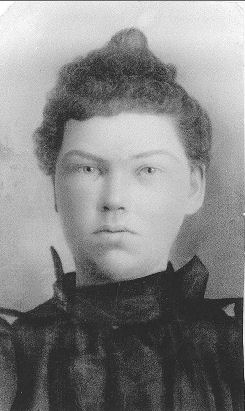
Carrie Melissa Sanford
On June 15, 1898 he married Carrie Melissa Sanford in Basin. Carrie was born on January 18, 1874 at Warm Creek, Millard County, Utah to Emulous Sanford and Catherine Cloward. The Sanfords had moved to Basin in 1880. At the time of their marriage, Charles was 31 and Carrie was 24. Their first three children; Arthur Valoris who went by Slim (8 Feb 1900), Vyla June (4 Jun 1901), and Charles Myrl who went by Myrl (24 Jul 1903) were all born in Basin.
While living in Basin, he was ward clerk for four or five years. As a young man, had served as the second assistant to the Sunday School Superintendent from December 5, 1886 to May 11, 1891 The community of Basin was a close knit group with many good people and they looked out for each others' needs.
Charles homesteaded in the Starr's Ferry area three miles west and three-quarters of a mile south of Burley. He built a log house during the summer of 1904 and in November moved the family there. He and Carrie built a chicken coup and a corral, they had a team of horses, a few head of cattle, two or three pigs and some chickens. The Old Oregon Trail ran through their place and it was the only road there at that time, covered wagons went by quite often. Everything was sagebrush, nothing had been cleared yet. There were lots of wild deer and antelope, and an abundance of rabbits. Because of the coyotes they had to shut the chickens up tight at night. The coyotes were even heard during the daytime.
They
hauled all of their water from the Snake River, which was so clear at
that time that the bottom could be seen. That was how they obtained
water for themselves and their livestock. They had a metal tank in a
wagon and backed it down into the river. They put a bucket on a pitch
fork handle and dipped the water out of the river to fill the tank.
Those who had lots of livestock would drive them to the river once a
day. In the winter they cut blocks of ice from the river and packed
them in straw and sawdust in a shed to be used as a walk-in cooler.
In this way, they could keep their milk and other food fresh. 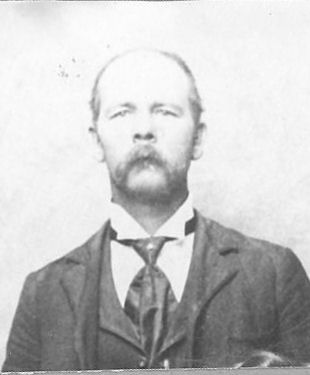
Charles Wiseman Dayley
People began to come and stake their claims. Many of them had a lot of problems as, they had to live on the land all of the time and couldn't be gone from it more than thirty days. If they didn't someone could "jump" their claim and they would lose everything, and many did. Yet there was no employment so many of the men had to go away to work and some didn't make it back in time. There were always those waiting to contest a claim that the land had only been partly improved.
In time many of the homesteaders had cleared the brush off the land and were getting it ready for the water. Canals, laterals and ditches were being built as the Minadoka Dam was nearing completion. They used what were called Johnson Brush Grubbers with a team of horses pulling it across the fields. Some used a railroad rail with a team or two at each end. Clouds of dust and dirt arose in the air and at night much of the brush would be burned. Fires could be seen everywhere.
After
clearing the land and digging the ditches, there was a big
celebration at the Minadoka Dam when the gates of the dam were
closed. The water of the Snake River began to back up and flow
through the canals providing water for the South Side Minadoka
Project in the spring of 1906. Excited and happy, the people ran to
meet the water. It could be seen coming as a cloud of dust rose into
the air as the water hit the bone-dry dirt, then there was the sweet
smell of water as it came closer. It was a beautiful moonlit night
when it reached Charles' farm. Everyone living west of them were on
his farm waiting. As the water reached each man's farm, he was there
waiting, with shovel in hand and turned the precious water onto his
fields which were already planted and waiting for water. What a
wonderful thing this was, now they could raise crops to sell, plant
trees, grow gardens, and even have some grass around the house with
some flowers. These early settlers of Burley suffered many hardships
in getting the project started so they and future generations could
enjoy the fruits of their labor.
Clearing sagebrush near Burley
Charles
was an inventor of sorts and when the water came onto the project, it
was he who first developed the head-gate, a device to control the water
from the canals into each farmers' individual ditches. It is
unfortunate that he was never given proper credit for his invention,
probably due to the difficulty of applying for and securing a patent.
However, the family and many area farmers knew that he was the first
to make the workable head-gates in this area.
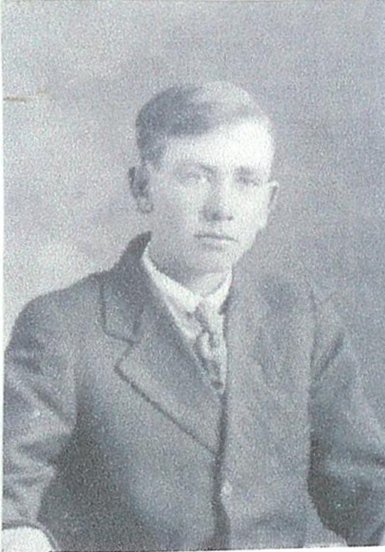
Slim
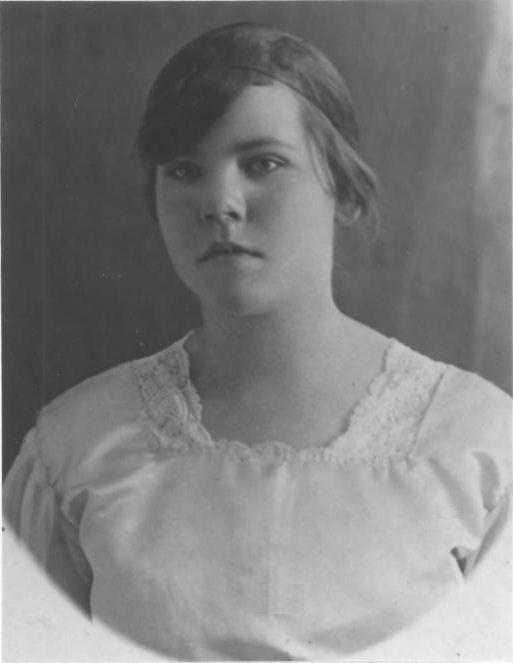
Vyla
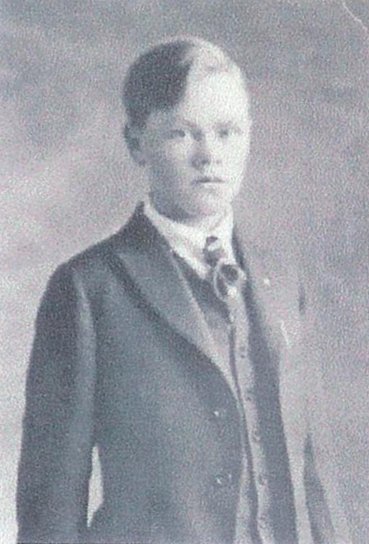
Myrl

Jannette
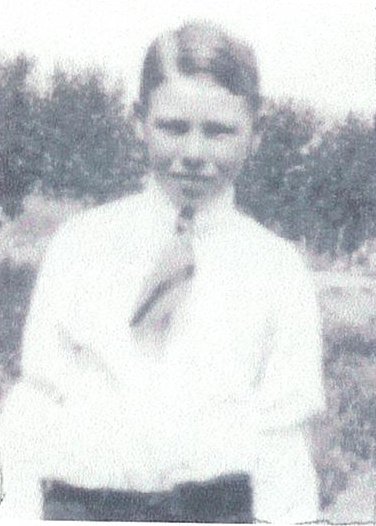
Delbert
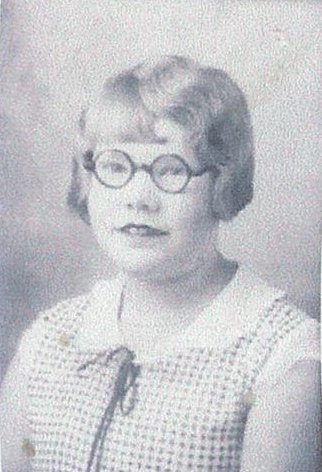
Daisey
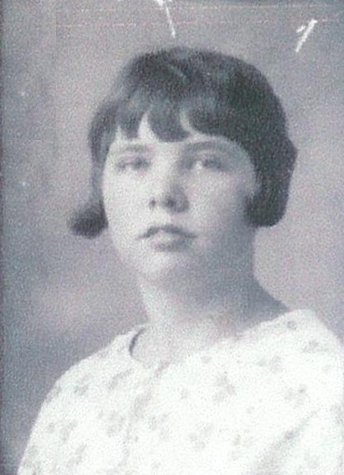
Nina
Once their crops began to grow, jackrabbits descended on the fields devouring anything green. They used to have rabbit drives on moonlit nights, herding them into net wire corrals and killing them by the thousands. Otherwise they would have eaten every spear of wheat and everything else that came through the ground.
The town of Burley was established in 1905 and was growing fast. The L.D.S. members built a church house on the corner of Thirteenth and Conant Ave. Charles and his son, Slim, helped mix mud for the masons. The Dayleys began attending church services in the Burley Ward. The children attended school in a little one room schoolhouse with a boxcar roof two miles south of Burley and two and three-quarters west. A man named Nimrod Good was the teacher. Then they moved to a new school about a half-mile east of the old one. It was a nicer building although just one room for twenty-five to thirty students for grades one through eight.
For the first few years after moving to Starr's Ferry, they spent some winters iving in Basin. The school in Basin where the children attended was a two-story building. Mr. Blackburn taught the four upper grades upstairs and Miss Best had the lower grades.
Five more children were born at Starr's Ferry; Emma Jannette who went by Jennette (19 May 1907), Delbert Enoch (20 Jun 1909), Thelma who died the day she was born (22 Sep 1911), Carrie Daisey who went by Daisey (21 Aug 1913), and Nina Mae (5 Sep 1915).
They made friends in the area as more people came. There were the Egans, Sides, Pulsifers, Farnsworths, Harris's, Durfees, and Dr. Laughlin, who was a widower. It was a happy neighborhood. Their only source of entertainment was what they furnished for themselves, candy-pulling parties and any other excuse for a party in each others' homes. Dances were held to the tune of the fiddler. Charles was an outstanding "caller" for the square dances that were held in the community. He could dance the waltz and balance a glass of water on his head and not spill a drop.
The family was close and was always interested and concerned with each other. The children played well together. Charles liked to sit in his rocking chair every night, rocking and singing to the youngest member of the family. He would take a baby in his arms and rock and sing by the hour. The family all enjoyed it and could have listened to him all night. He was a very good singer and led the choir in his ward.
He was always very active in the church. He was a ward teacher for many years and taught Sunday School. He and his wife taught the principles of the Gospel to the family, they had family prayers and blessed the food.
He was not a very successful farmer and the family didn't have much of the worldly goods but they had love and companionship. He surprised his wife with a hand-operated washing machine, which he had ordered through the mail. It was still hard work, but much easier than washing on the washboard.
Charles was never heard speaking a cross word to Carrie and they were never heard quarreling. In correcting the children, he never raised his voice. He was very kind and patient with them. He would not allow the children to quarrel with one another and taught then to speak kind words. He hated profanity and swearing and never uttered anything profane.
He was a happy-go-lucky man and always had a joke. He had a cheerful greeting for everyone, any place and any time. When meeting small boys or girls he would call them the opposite what they were and loved teasing them. He liked to tease children by pulling their ears, or nose and say, got your ear or nose". When his daughters got older, he got a big kick out of putting his toenail clippings in their powder. He liked to celebrate New Year's Day. He called it his day and the family always went home on that day for a day of fun. At Christmas he would dress up as Santa. He had the right figure and personality for it.
Charles had one vice, smoking. Rolling his cigarettes was a real ritual with him. First reaching into his shirt pocket for the little pouch of tobacco and the papers. He carefully shook just the right amount of tobacco into the paper, then started rolling it. It required a touch of spit to the papers to get them to hold together before lighting up. When advising his family about forming bad habits he said, “You will be sorry just once, and that will be all of your life.” He wanted very much to quite smoking but was never able to break the habit.
Charles' son, Delbert died from diphtheria at the age of eleven on October 30, 1920. Later that year, their children began marrying and starting families of their own. The first was Vyla, who married Ira Frost on December 4, 1920. Next was Slim who married Rhoda Marie Keaton on October 3, 1923 followed by Jannette who married Henry Rassmussen on June 11, 1925. A few years later, Mryl married Alta Bell on June 24, 1929.
In
1925 Charles and Carrie sold their farm and moved into a home on
Schodde Avenue in Burley. He was a large man, weighing over
two-hundred pounds and was very ill many times. He had abscesses
that he suffered with. For a while he took care of honeybees but
their sting was so poisonous to him he had to give it up. He would
lay on the floor with a green fluid running from his mouth, so sick
that everyone thought for sure he was going to die. Charles had the
job of driving the mail from Albion to Oakley for a while. He also
worked at the sugar factory for many years until he was no longer
able to work.
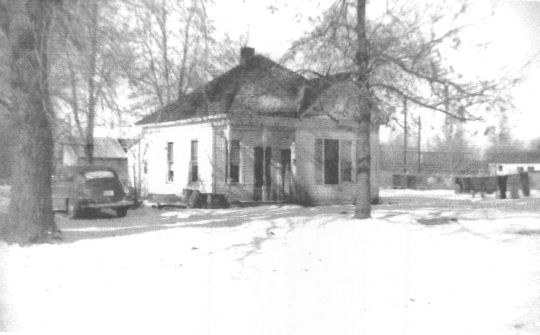
The Dayley home on Schodde Avenue
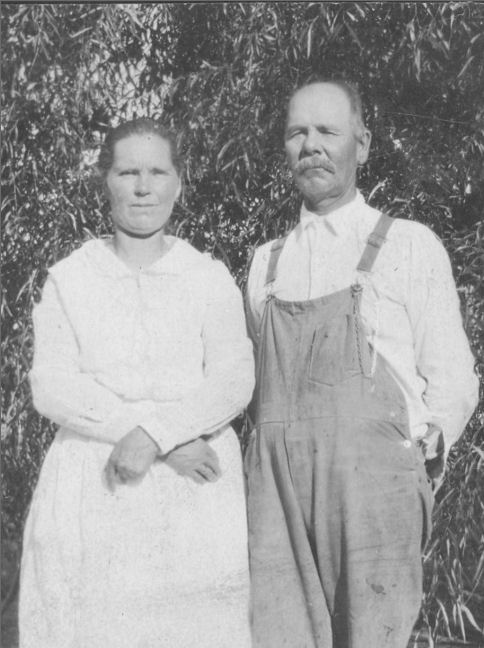
Carrie and Charles - 1926
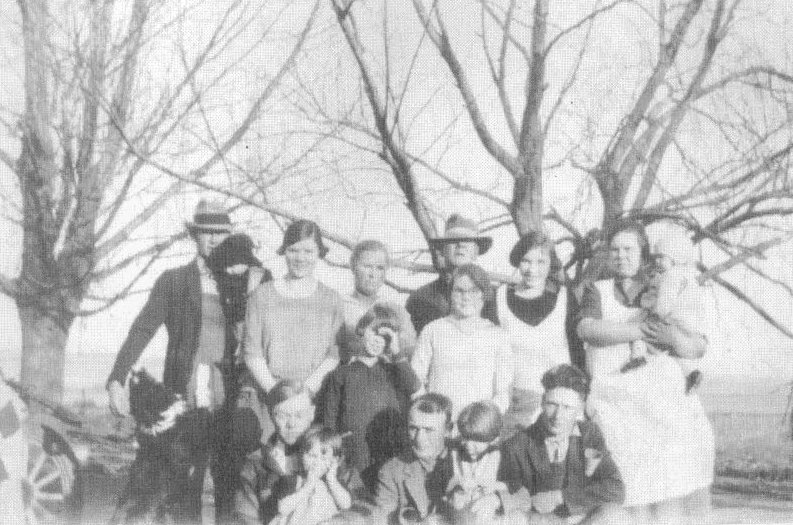
The Dayley Family - 1926 Back: Slim holding Dorothy, his wife Rhoda, Carrie, Charles, Jannette, and Vyla
holding Myron. Middle: Nina and Daisey. Front: Myrl holding Thelma, Ira Frost holding Eunice, and Henry
Rassmussen. At the time of this picture, Rhoda was expecting Nelda, Jannette was expecting Bertha, and
Vyla was expecting Celia.
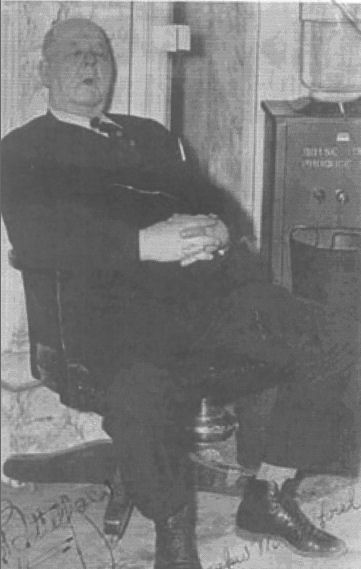
"Senator" Dayley hard
at work in Boise
He
had a wonderful memory and was very studious. He was especially well
versed in the Book of Mormon. He had the ability to remember and
quote scriptures and the events that happened when he was young. On
one occasion he was visiting with a neighbor who had dropped by for a
visit. The discussion turned to religion and he was able to quote
scriptures to prove every point he made although the other man became
quite abusive. Charles never, ever raised his voice. Nothing ever
seemed to excite him or make him forget that he was a gentleman in
the true sence of the word. 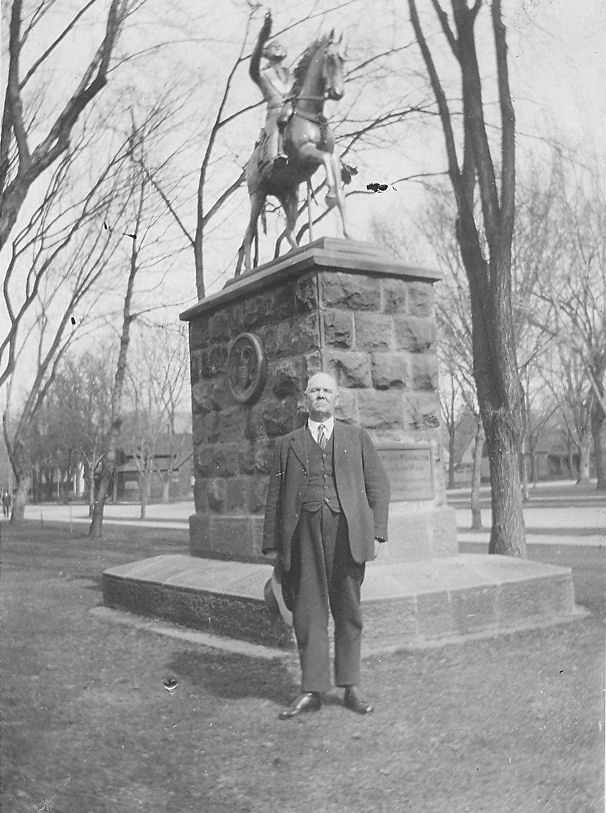
Charles on the grounds of
the State Capitol.
He was a good penman and was active in civic affairs and politics. At one time he was the Justice of the Peace and also was a constable. He also worked on a dredge boat on the Snake River dredging for gold. Once during World War I, there was a trainload of soldiers leaving Burley. Charles walked seven miles to see them off and then had to walk home after dark.
The younger children eventually got married and started families of their own as well. Nina married Raymond Peck on September 29, 1935. They were later divorced and she married Ralph Bowen Heward on March 17, 1944. Daisey married Alfred Leon Moore on October 13, 1941.
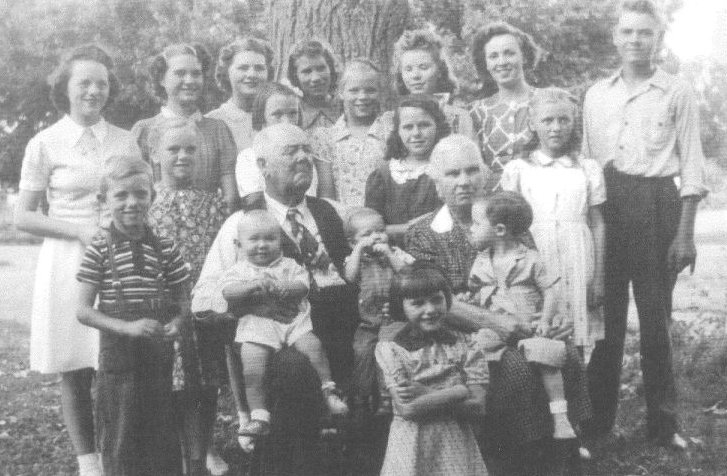
Charles and Carrie with their grandchildren in 1941. Back row: Thelma Frost, Celia Frost, Eunice Frost,
Lois Dayley, Maxine Dayley, Nelda Dayley, Dorothy Dayley, and Myron Frost.Middle Row: Irma Frost,
Sherell Dayley, Lorna Frost, and Marian Frost. Front: Gerald Frost, Ronnie Moore on Grandpa Dayley's
lap, David Dayley, Grandma Dayley holding Lonnie Peck
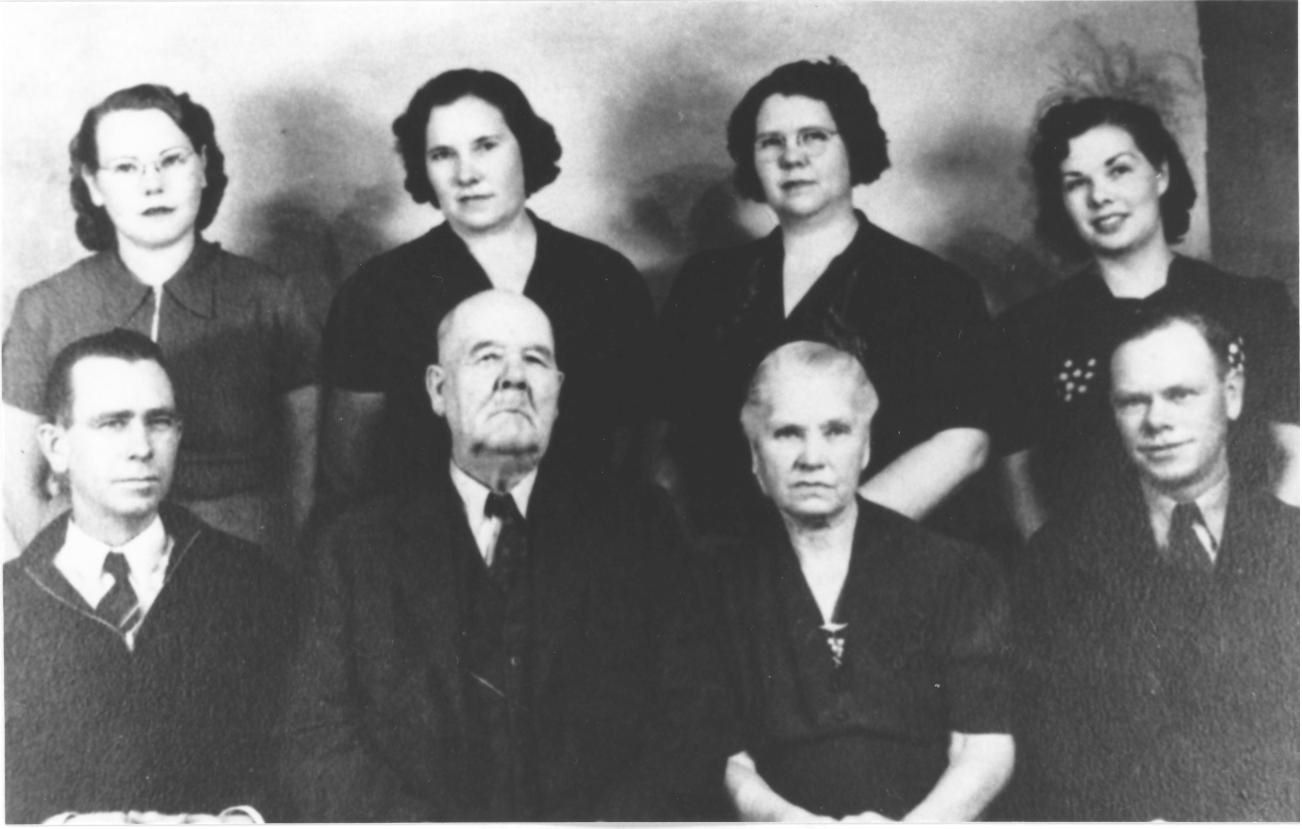
The Dayley Family - Standing: Daisey, Jannette, Vyla, and Nina.
Seated: Slim, Charles, Carrie, and Myrl.
In later years he learned to do some fancywork and made lovely cushions from velvet and yarn. He had to be busy. Most of the relatives called him "Charley Wise" and his many friends affectionately called him "Senator" because he worked as an attaché during the legislative sessions at the capitol in Boise. At one time he was urged by his friends to run for Senator from Cassia County. He had great loyalty and devotion to the United States. He believed that the Constitution of this nation was framed by wise men whom the Lord raised up for that very purpose. He advised his family many times to remain true to the Gospel of Jesus Christ and the Constitution of the United States. He told them, “If you do, you will be right and if you don't you'll be wrong.”
When the Burley 3rd Ward
was created, the Dayleys were in the new ward. Charles was proud
to have helped to build their new meetinghouse.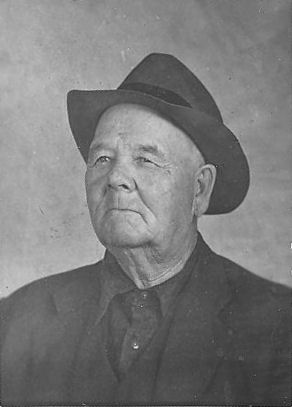
Charles Wiseman Dayley
Charles Dayley died following a heart attack at his home at 2:30 a.m. on Sunday June 4, 1943 at the age of 76. His funeral was held on June 7rd at the Burley 3rdWard chapel. The many, many floral offerings and the number of people attending his funeral, both high and low in rank and station, and the service gave evidence of the high esteem in which he was held by all who knew him. He had many more friends than any of his family had any idea of. After all, those are the things that mark the true worth of a man. If he was able, he would ease the suffering of his fellowmen and make life just a little brighter and better for all with whom he came in contact with. He was truly one of God's noblemen. Following the service he was buried in the Pleasant View Cemetery in Burley.
Carrie was sealed to him by proxy on January 16, 1947 in the Idaho Falls Temple. She lived many more years and died at the age of 83 on December 30, 1957 and is buried next to Charles. From their six children who lived into adulthood, their posterity includes 29 grandchildren and a numerous host of succeeding generations.